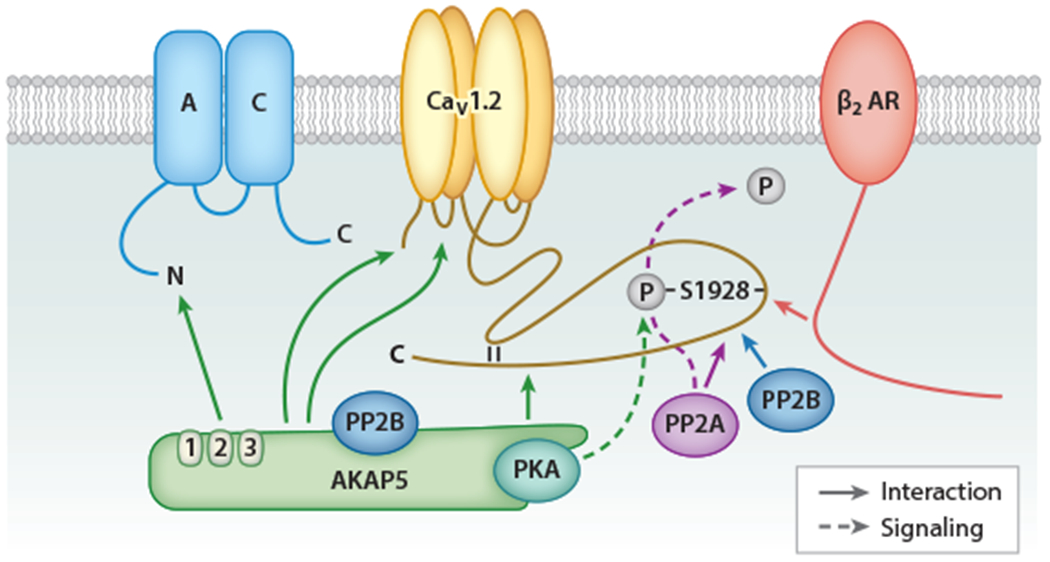Figure 1.

The β2 AR–AC-PKA-CaV1.2 complex. Green arrows indicate binding of the N terminus of AKAP5 to the N terminus of AC, the C terminus of AKAP5 to the distal C terminus of α1 1.2, and the so far undefined regions of AKAP5 to the N terminus and the loop between domains I and II of α1 1.2. AKAP5 links in this way AC, PKA, and PP2B to CaV1.2. The β2 AR binds with its C terminus to the region around S1928 in the distal C terminus of α1 1.2 (red arrow). PP2A and PP2B also bind directly to α1 1.2 about 40 and 50 residues downstream of S1928 (purple and blue arrows). Activation of β2 AR–Gs-AC-cAMP-PKA signaling leads to S1928 phosphorylation by PKA (dashed green line) and upregulation of CaV1.2 activity, both of which are reversed by the β11.2-associated PP2A (dashed purple line). Abbreviations: AC, adenylyl cyclase; AKAP5, A-kinase anchor protein 5; AR, adrenergic receptor; PKA, cAMP-dependent protein kinase; PP, protein phosphatase.
